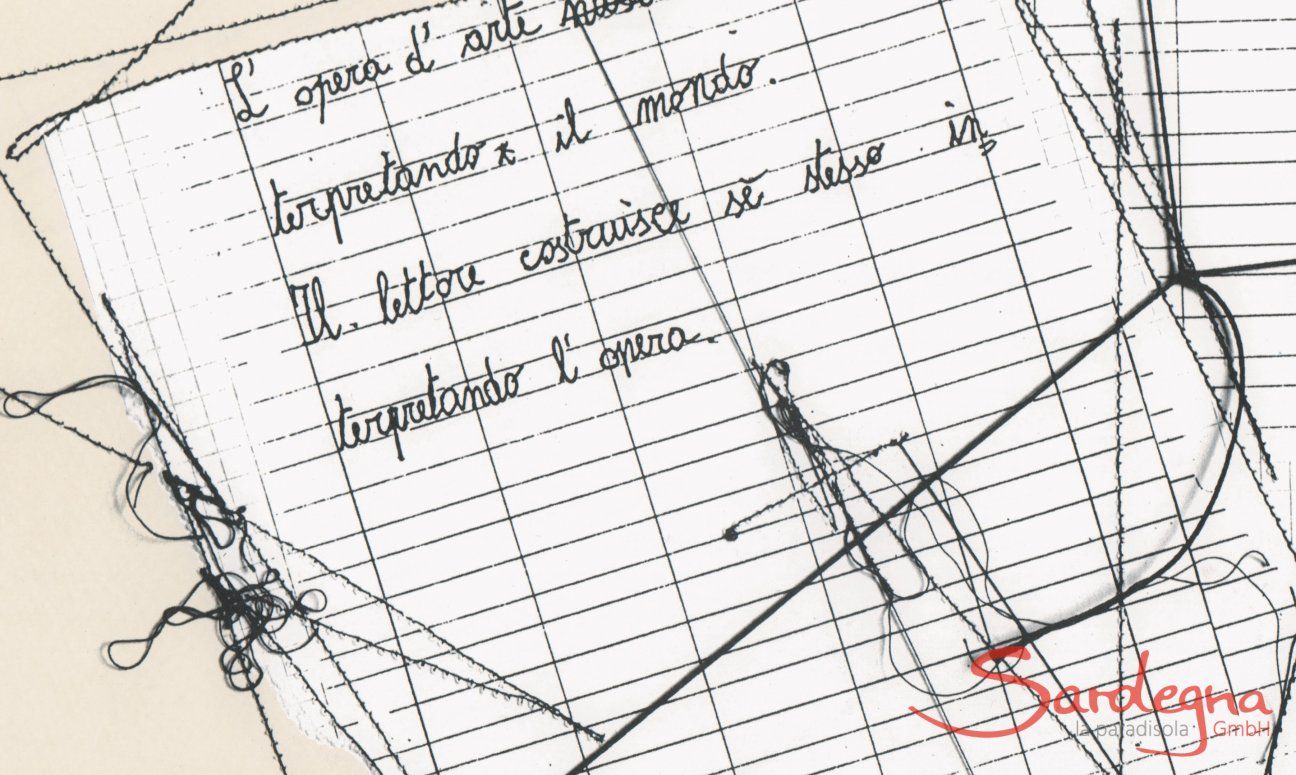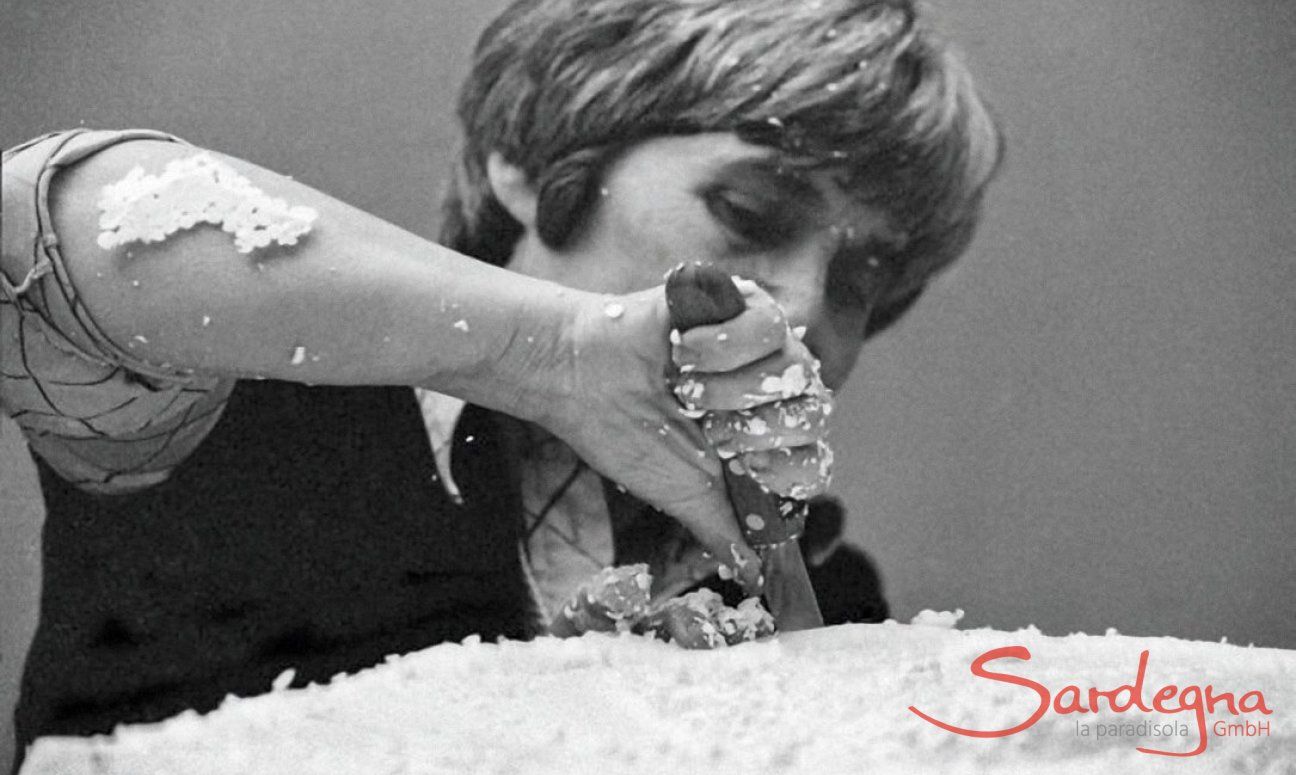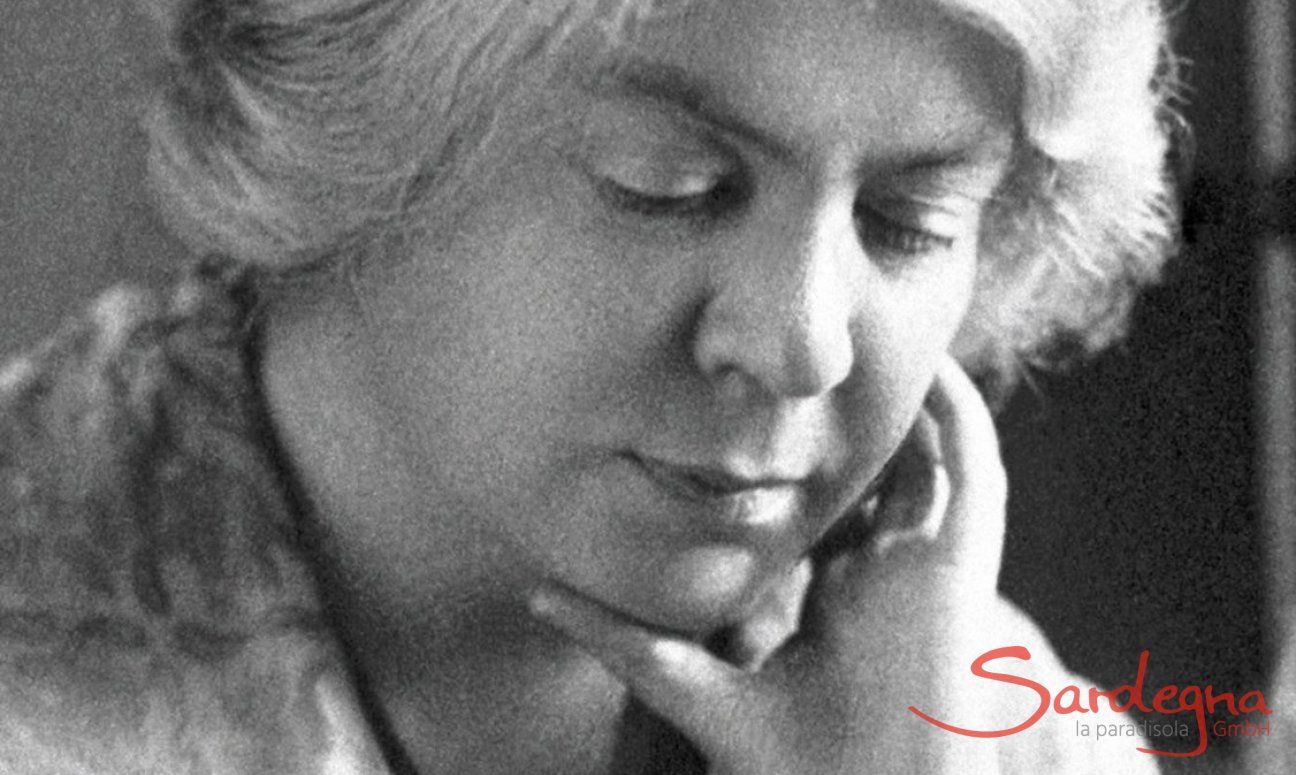
Two world-renowed women
These two women are the most important representatives of Sardinia in the world: writer Grazia Deledda (Nuoro 1871- Rome 1936) and artist Maria Lai (Ulassai 1919 - Cardedu 2013). They are celebrated by universities, museums, and symposia for their significance to the international art world.
Details
These two women are the most important representatives of Sardinia in the world: writer Grazia Deledda (Nuoro 1871– Rome 1936) and artist Maria Lai (Ulassai 1919–Cardedu 2013). They are celebrated by universities, museums, and symposia for their significance to the international art world.
In 1926, Grazia Deledda became the only Italian woman ever to have received the Nobel Prize for Literature in 1926 for her life‘s work, including the novels Canne al vento, Elias Portolu and Marianna Sirca as well as her short stories. Her work has been translated into many languages and read in many countries. Febo Mari made the silent film Cenere (1916) after a novel by Deledda at a time when film was beginning to overtake literature as the primary form of public entertainment. The star of the film was the theatre actress Eleonora Duse. Grazia Deledda thus became the first multimedia woman of the time and a well-known representative of her homeland far beyond
the Tyrrhenian Sea and the Alps.
Maria Lai‘s art arrived on the international art scene posthumously, with exhibitions in New York, Basel, London and Milan. Closing shortly before this Christmas, the highly acclaimed retrospective „Tenendo per mano il sole“ in Rome has seen a record number of visitors. Three-dimensional woven pictures, fabric collages, threads, terracotta pieces and wire have been featured. Her most spectacular artwork, entitled „Legarsi alla montagna“, was also shown — a relational piece in which the inhabitants of Ulassai connected houses and mountains and
people with a blue ribbon.
The Stazione Dell‘Arte in Ulassai exhibits Maria Lais art all year round. In Grazia Deledda‘s home town, Nuoro, in front of the Church of Solitude (where the writer is buried), Maria Lai created a work of art to commemorate the Nobel Prize winner: pillars of white concrete with texts and symbols and figures from Deledda‘s texts. The two ambassadors of Sardinia are united there. They symbolise the sea and mountains of one of the most beautiful and unique places in the world.
(Text Giacomo Mameli)
In 1926, Grazia Deledda became the only Italian woman ever to have received the Nobel Prize for Literature in 1926 for her life‘s work, including the novels Canne al vento, Elias Portolu and Marianna Sirca as well as her short stories. Her work has been translated into many languages and read in many countries. Febo Mari made the silent film Cenere (1916) after a novel by Deledda at a time when film was beginning to overtake literature as the primary form of public entertainment. The star of the film was the theatre actress Eleonora Duse. Grazia Deledda thus became the first multimedia woman of the time and a well-known representative of her homeland far beyond
the Tyrrhenian Sea and the Alps.
Maria Lai‘s art arrived on the international art scene posthumously, with exhibitions in New York, Basel, London and Milan. Closing shortly before this Christmas, the highly acclaimed retrospective „Tenendo per mano il sole“ in Rome has seen a record number of visitors. Three-dimensional woven pictures, fabric collages, threads, terracotta pieces and wire have been featured. Her most spectacular artwork, entitled „Legarsi alla montagna“, was also shown — a relational piece in which the inhabitants of Ulassai connected houses and mountains and
people with a blue ribbon.
The Stazione Dell‘Arte in Ulassai exhibits Maria Lais art all year round. In Grazia Deledda‘s home town, Nuoro, in front of the Church of Solitude (where the writer is buried), Maria Lai created a work of art to commemorate the Nobel Prize winner: pillars of white concrete with texts and symbols and figures from Deledda‘s texts. The two ambassadors of Sardinia are united there. They symbolise the sea and mountains of one of the most beautiful and unique places in the world.
(Text Giacomo Mameli)


